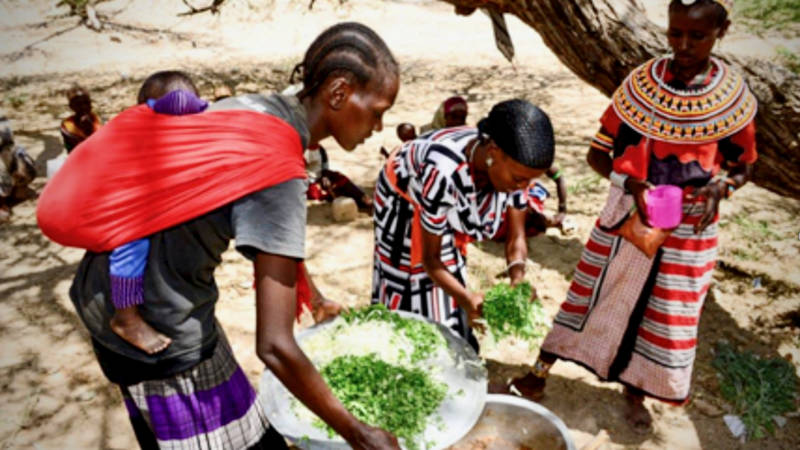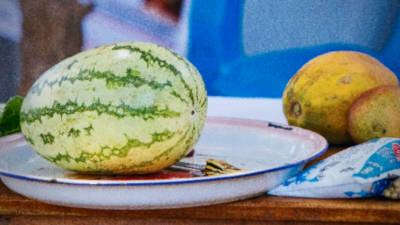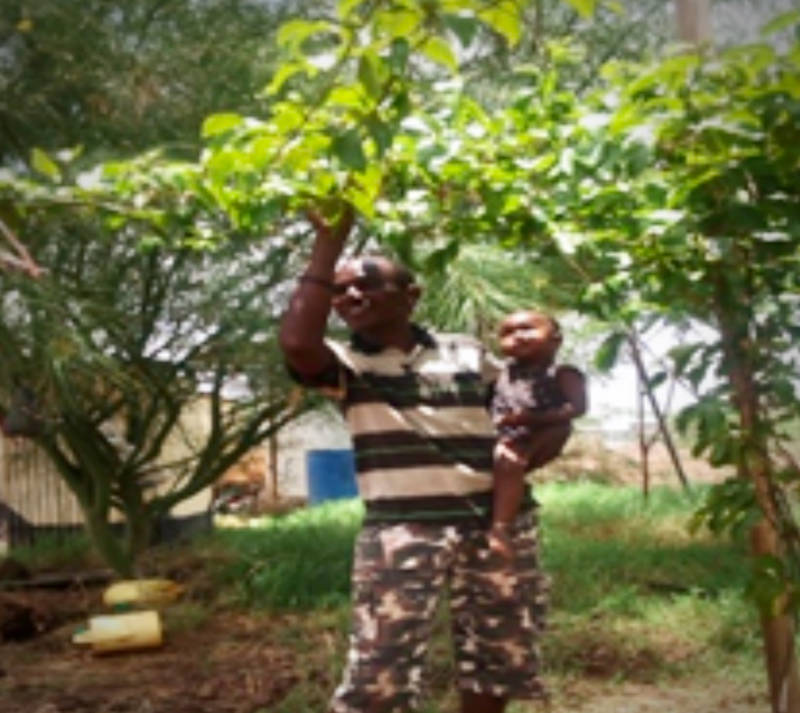How To Achieve Knowledge In the Community and Convert It Into Practice
How To Achieve Knowledge In the Community and Convert It Into Practice
Find the lessons learned from social behaviour change activities in Kenya

Photo: © Jörg Bötling
The project works with women of reproductive age on group saving and loaning, kitchen gardening, animal husbandry and natural resource management. They are also trained on maternal, infant and young child nutrition (MIYCN), including cooking demonstrations.
Maintaining knowledge is the real challenge
Especially with regard to training, the project was challenged by issues on how to make sure new know-how was retained over longer periods of time and how to trigger that translation into tangible action. While most projects deal primarily with the second question, staff of this project realised early on that they had to prioritize the sustainability factor. To demonstrate with an example, the project looked carefully into the importance of exclusively breastfeeding before it aimed at the mothers to practice breastfeeding their children exclusively for the first six months of life.
Actions taken for the MIYCN training
Project staff assumed a pool of trainers knowledgeable on MIYCN existed. What they found out later was that there were trainers available, but they were not sufficiently trained on MIYCN and adult learning methodologies. Therefore, adjustments had to be made to fit to the target group’s needs and adapt the training as it went along.
Some lessons learnt as the training sessions carried on
- Country structures need to be acknowledged and should be strengthened in order to harmonise with the national strategy and avoid duplication of efforts.
- A pool of trained MIYCN trainers should exist or be established when starting off
- Trainers need to be knowledgeable in MIYCN and adult education, e. g. applying participatory methods
- Training needs to be adapted to local context: Language, training materials, content, needs and interests of women, socio-cultural environment, use of locally available foods, including wild foods
- During the trainings, trainers need to …
… have the participants recap the previous session, complement and wrap-up
… ask women about their knowledge regarding the topic of the respective session
… use communication materials (e.g. posters for illiterate women)
… involve participants with interactive methods
… incorporate cooking demonstrations at suitable stages in the course
… summarize the session and give an attractive outlook to the next session
- Train best-performing mothers in counselling to spread and thereby retain the knowledge in the communities

Sample of poster used in nutrition training
Other important aspects
- Monitoring participants’ knowledge in MIYCN before and after the entire MIYCN cycle
- Confirming the results with focus group discussions
- Evaluating the training sessions and trainers
Examples of practices adopted by the target group
- Exclusive breastfeeding; early initiation of breastmilk
- Birth spacing/family planning
- Eating a variety of foods from different food groups
- Washing vegetables before cutting; cooking vegetables less than five minutes
- Husbands do not miss family foods anymore as they enjoy the new way of cooking
During field visits staff also discovered that malnutrition rates decreased because benefeciaries frequently visit health facilities nowadays and have adopted e.g. the mentioned practices.
These were important steps to adjust the training in terms of gaps and needs as well as to improve the way of teaching of the respective trainers. Continuous monitoring of the adoption also helps to further adapt training.
Sensitizing influencers
Before one even starts to sensitize the target groups, it is important to generally sensitize the communities, especially influencers such as mothers-in-law, the elderly and men as well as local authorities, local religious and political leaders — and keep on doing so.

Almost creating a new taboo: The women harvested such nice watermelons from their home gardens that their husbands said the women should not eat them. They were too sweet. Photo: © Dennis Mukundi
A major behaviour pattern that turned out to be a main barrier when improving the nutrition situation for women in the project regions was, for example, not to eat any eggs during pregnancy. One possible solution the project found to this issue was to repeatedly sensitize not only the target group but also the men. This was done by illustrating to them the benefits of egg consumption as well as the downsides of non-consumption.
Furthermore, people from the communities who have adopted a positive deviant behaviour can be used to influence their peers and fellow community members.
Gender aspects
Social and behaviour change cannot go without addressing gender aspects! Therefore, the project trained both women and men on home gardening and improving animal husbandry practices for small stock that remains with the women in the settlement as well as sensitized them on nutrition.
Men are usually still the decision-makers in the households. They need to understand the importance of nutrition to better decide what food to buy for the family — preferably by jointly deciding with their wives.
With group saving and loaning activities within the project women were able to establish their own small businesses. This strengthened their decision-making power on how to spend their money. The project can tell many success stories on changing gender roles step by step: a man bonding with his child while the woman is active in her kitchen garden or constructing houses to earn money for the family is only one of them.
The projects key experience was that it takes time and a lot of effort to find the right way forward for implementation!
About the of project
Kenya is one of the twelve countries, where the Global Program Food and Nutrition Security, Enhanced Resilience carries out its Food and Nutrition Security Project . It operates in the North, in Marsabit and Turkana counties targeting women of reproductive age and children of up to two years. The women are clustered in groups and then engaged in activities, such as group saving and loaning, kitchen gardening, animal husbandry and natural resource management. All women receive training on maternal, infant and young child nutrition (MIYCN), including cooking demonstrations.
Training materials
Contact
Anna-Vanessa Kullanek, anna-vanessa.kullanek@giz.de


